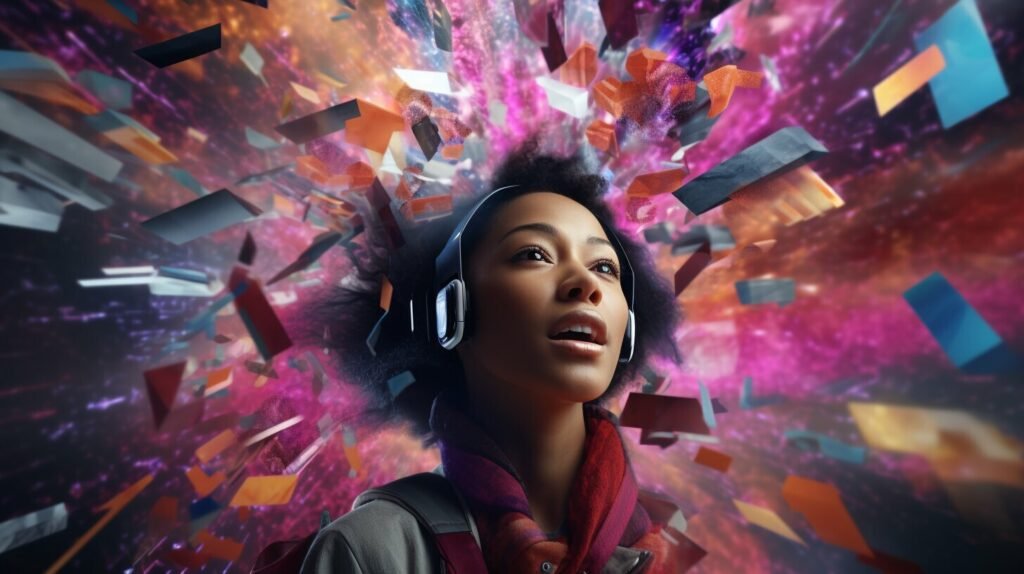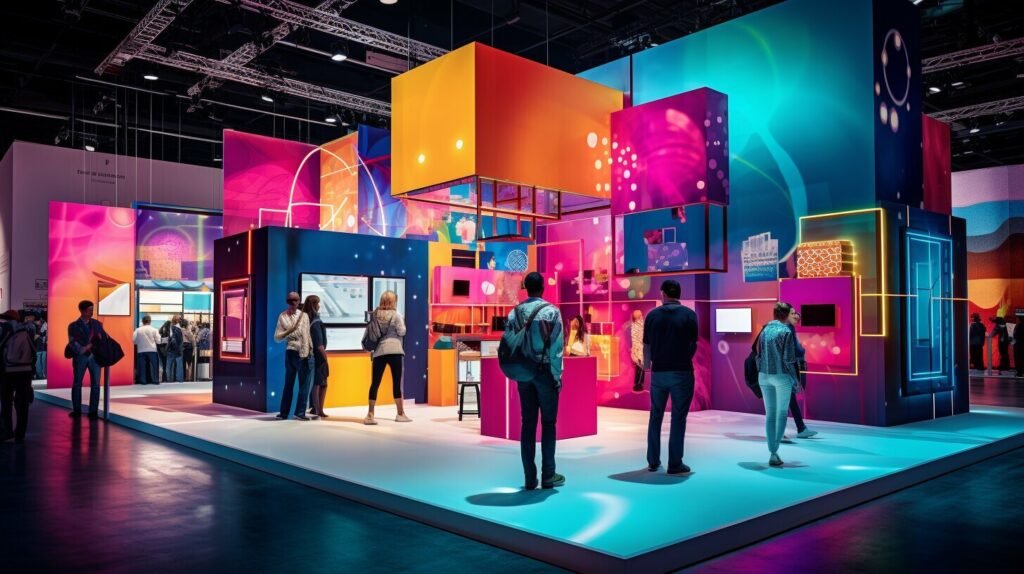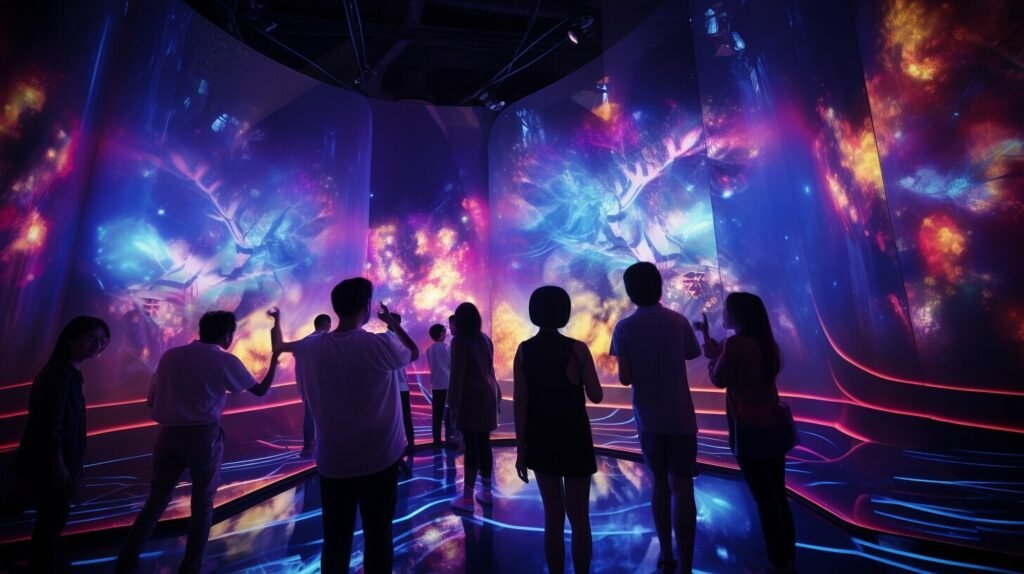In today’s saturated market, simply promoting a product or service is no longer enough to capture consumers’ attention. Brands need to go beyond traditional marketing tactics and create experiences that truly engage and resonate with their target audience. This is where experiential marketing comes in, providing a powerful tool for companies to connect with customers through immersive brand experiences.
Experiential marketing involves creating interactive and engaging campaigns that allow consumers to interact with a brand, product or service in a meaningful way. The goal is to evoke emotions, create lasting impressions and foster brand loyalty. By offering a unique and memorable experience, brands can differentiate themselves from their competitors and increase customer engagement.
Immersive brand experiences are at the heart of experiential marketing. By tapping into the senses and creating a multi-sensory experience, brands can create a deeper connection with their audience. Whether it’s a pop-up shop, live event, or virtual reality experience, the key is to create an environment that captivates, entertains, and educates the consumer.
Key Takeaways:
- Experiential marketing is a powerful tool for engaging consumers through immersive brand experiences.
- The goal of experiential marketing is to evoke emotions, create lasting impressions and foster brand loyalty.
- Immersive brand experiences tap into the senses to create a deeper connection with the audience.
Understanding Experiential Marketing
Experiential marketing is an interactive approach to marketing that focuses on creating engaging consumer experiences. Rather than simply promoting products or services, experiential marketing seeks to immerse consumers in the brand and create lasting impressions. By providing memorable and meaningful experiences, brands can foster greater loyalty and affinity among their target audience.
Experiential marketing encompasses a wide range of strategies and tactics, including interactive exhibits, pop-up stores, live events, and digital activations. At the heart of all experiential campaigns is the desire to create immersive brand experiences that resonate with consumers on an emotional level.
Interactive Marketing
At its core, experiential marketing is a form of interactive marketing. By engaging consumers in a two-way dialogue, brands can create more personalized and meaningful experiences that are tailored to the needs and interests of their target audience.
Interactive marketing campaigns are designed to get consumers actively involved in the experience, whether through physical interactions with products or through digital interactions with an online platform. By giving consumers a role to play in the experience, brands can create a sense of ownership and investment among their target audience.
Experiential Activations
Experiential activations are the specific tactics and strategies used to create immersive brand experiences. These activations can take many forms, depending on the brand, the target audience, and the campaign objectives.
Popular examples of experiential activations include pop-up stores, product demonstrations, interactive exhibits, and live events. These activations are designed to create a sense of excitement and engagement among consumers, while also providing them with valuable information about the brand and its offerings.
With experiential activations, the focus is on creating memorable and shareable experiences that drive brand awareness and engagement. By providing consumers with a unique and memorable experience, brands can generate buzz and enhance their reputation among their target audience.

The Power of Immersive Brand Experiences
Immersive brand experiences are a powerful tool in experiential marketing that can create lasting impressions on consumers. By engaging multiple senses, brands can create emotional connections with consumers and enhance brand loyalty.
Research has shown that sensory marketing can increase the likelihood of brand recall and positively impact purchase behavior. In fact, according to a Brand Experience Report by Freeman, 59% of consumers who participate in a memorable brand experience are more likely to purchase from the brand.
| What Makes Immersive Brand Experiences Effective? | Examples of Immersive Experiences |
|---|---|
|
|
Immersive brand experiences can take various forms, from pop-up stores and mobile tours to art exhibits and product demos. Regardless of the format, the key is to create an environment that engages the consumer and makes them feel connected to the brand.
For instance, in 2014, Pepsi Max created an immersive augmented reality experience called “Unbelievable Bus Shelter” that surprised consumers waiting at bus shelters. The bus shelter walls showed unbelievable scenarios, such as a tiger running loose or a UFO landing, creating a memorable experience that resonated with consumers.

“Immersive marketing is no longer just a trend, it’s becoming a necessity as consumers demand more memorable and engaging experiences from brands.” – Brian Solis, Digital Analyst and Futurist
How to Create Effective Immersive Brand Experiences?
To create effective immersive brand experiences, brands need to understand their target audience and their preferences. Additionally, they need to align the experience with their brand values and mission.
Technology can play a significant role in creating immersive experiences, such as virtual or augmented reality. However, it’s important to ensure that the technology used doesn’t overshadow the main message of the campaign. Storytelling is also crucial in creating immersive experiences as it allows consumers to connect with the brand emotionally.
Ultimately, creating immersive brand experiences requires creativity, innovation, and a deep understanding of the target audience. Brands that invest in experiential marketing and create memorable experiences are more likely to foster brand loyalty and create a lasting impact on consumers.
Planning Effective Experiential Campaigns
Experiential campaigns require a thorough planning process to ensure that the immersive brand experience resonates with the target audience. Here are some key components to consider when planning an effective experiential campaign:
| Component | Description |
|---|---|
| Objectives | Align campaign objectives with the target audience to create relevant experiences that drive brand engagement. |
| Venue Selection | Select a venue that complements the campaign objectives, reflects the brand’s identity and is easily accessible to the target audience. |
| Technology Integration | Integrate technology to enhance consumer experiences, such as virtual reality, augmented reality, and interactive displays. |
| Storytelling | Create a compelling story that captures the attention of the target audience and aligns with the brand’s messaging. |
By carefully planning each component of the experiential campaign, brands can create memorable and impactful experiences that resonate with consumers and drive brand awareness.
Image source: 
Executing Engaging Experiential Activations
Experiential activations are interactive marketing experiences designed to engage consumers with a brand and create memorable connections. When executed effectively, these activations can evoke powerful emotions and leave a lasting impression on consumers. To create engaging experiential activations, brands must be strategic in their approach, utilizing a variety of techniques to make the experience immersive and memorable.
Elevating Experiences through Immersive Brand Storytelling
One key element to creating immersive experiential activations is storytelling. By crafting an emotional and compelling brand narrative, marketers can transport consumers into a different world and create a strong connection with the brand. Whether it’s through interactive installations, immersive environments, or engaging live events, storytelling can elevate the brand experience and leave a lasting impression on consumers.
For example, in Samsung’s “Solve for Tomorrow” campaign, the brand created an interactive installation using virtual reality that transported consumers to a different world. Consumers were able to experience various scenarios, including a visit to a remote island, all while using Samsung technology. The campaign’s success was largely attributed to its immersive storytelling, which made the experience unforgettable for participants.
Leveraging Technology to Enhance Experiences
Technology plays a significant role in experiential activations, providing new opportunities to engage consumers and create immersive experiences. By leveraging technologies such as augmented reality, virtual reality, and interactive installations, brands can create sensory-rich experiences that truly immerse consumers in the brand story.
An excellent example of this is the “Field Trip to Mars” campaign by Lockheed Martin. Using VR technology, the brand created a simulation of a field trip to Mars, complete with an immersive “spaceship” and a virtual walk on the Martian surface. The campaign was a massive success and showcased the potential of technology in experiential marketing.
Amplifying Experiences through Social Media Integration
Social media is an essential component of experiential activations, extending the reach of campaigns beyond the physical event space. By integrating social media elements, such as interactive photo booths and personalized shareable content, brands can amplify the impact of their activations and engage consumers beyond the physical event space.
For example, at the Nike Women’s Half Marathon in San Francisco, the brand created a personalized photo booth experience that allowed participants to create customized images with Nike branding. Participants were then able to share their photos on social media, amplifying the reach of Nike’s brand message.
By utilizing these techniques, brands can create truly engaging experiential activations that leave a lasting impression on consumers and drive brand engagement.

The Power of Measuring the Success of Experiential Marketing
Measuring the success of experiential marketing campaigns is a crucial component of the planning process. Without proper evaluation, it is impossible to determine the effectiveness of the campaign and make informed decisions for future activations. There are several metrics and tools that can be used to evaluate the success of experiential marketing campaigns.
| Metric | Description |
|---|---|
| Brand Awareness | The level of brand recognition generated by the campaign among the target audience |
| Consumer Engagement | The level of interaction and involvement of consumers with the brand experience |
| Social Media Reach | The level of social media engagement and reach generated by the campaign |
| Return on Investment | The financial returns generated in relation to the investment made in the campaign |
These metrics can be measured using various tools such as surveys, social media analytics, and event feedback forms. In addition, experiential marketing campaigns should be evaluated based on the level of consumer satisfaction and feedback received.
“Measuring the success of experiential marketing campaigns is essential to refining future activations and maximizing the return on investment.”
Data-driven insights obtained through effective measurement can be used to optimize and refine future experiential campaigns. Consumers are more likely to engage with brands that provide relevant and authentic experiences. Therefore, measuring the success of experiential marketing is essential to ensuring that brands deliver impactful and memorable experiences that resonate with their target audience.

Case Studies: Experiential Marketing Success Stories
Experiential marketing has proven to be a highly effective strategy for brands to engage with their audiences and create lasting impressions. Let’s take a look at some successful case studies that showcase the power of immersive brand experiences.
| Brand | Campaign | Description | Impact |
|---|---|---|---|
| Spotify | RapCaviar Pantheon | Interactive museum exhibit featuring hip-hop artists and history. | Increased brand awareness and engagement, with over 2 billion impressions on social media. |
| Taco Bell | The Bell: A Taco Bell Hotel and Resort | Temporary hotel and resort fully themed around Taco Bell. | Generated significant buzz and media coverage, with the hotel selling out within two minutes. |
| Red Bull | Stratos | Sponsoring a record-breaking skydive from the edge of space. | Increased brand visibility and engagement, with over 52 million live YouTube views. |
These case studies demonstrate the diversity of approaches that brands can take when executing experiential marketing campaigns. Whether it’s through a pop-up event, an interactive exhibit, or a fully themed hotel, the key is to create memorable and engaging experiences for consumers that align with the brand’s values and objectives.

The Future of Experiential Marketing
Experiential marketing is constantly evolving as brands seek new ways to engage consumers through immersive experiences. The future of experiential marketing is shaped by emerging technologies and platforms that are changing the landscape of consumer engagement.
The Rise of Virtual and Augmented Reality
Virtual reality (VR) and augmented reality (AR) are becoming increasingly popular in experiential marketing. These technologies allow brands to create immersive experiences that transport consumers to different worlds or enhance their perception of the real world. VR and AR are particularly useful for brands in industries such as travel, retail, and entertainment, where consumers are seeking unique and memorable experiences.
The integration of VR and AR in experiential marketing campaigns also provides valuable data insights that can be used to refine future campaigns. It allows brands to track consumer behavior in real-time and understand what elements of the experience are most engaging.
The Impact of Emerging Platforms and Channels
The landscape of consumer engagement is constantly changing, with emerging platforms and channels such as social media, voice assistants, and chatbots playing an increasingly important role. These platforms provide new opportunities for brands to connect with consumers and create immersive experiences that resonate with their target audience.
Social media platforms such as Instagram, Snapchat, and TikTok have become powerful tools for brands to reach younger audiences through creative and engaging content. Voice assistants and chatbots are also becoming more prevalent in experiential marketing, providing consumers with personalized experiences that are tailored to their preferences and needs.
The Importance of Sustainability
Sustainability has become a key concern for consumers, and brands are increasingly incorporating sustainable practices into their marketing campaigns. Experiential marketing is no exception, and brands are now seeking ways to create immersive experiences that are environmentally friendly and socially responsible.
From using recycled materials in event production to incorporating sustainable messaging into campaigns, brands are finding innovative ways to align their experiential marketing with their sustainability goals.

The future of experiential marketing is exciting and full of potential. Brands that can stay ahead of emerging technologies and platforms, while also incorporating sustainable practices, will be well-positioned to create memorable and engaging experiences for their target audience.
The Future of Experiential Marketing
As technology continues to advance, experiential marketing is poised to take on new dimensions and provide even more immersive brand experiences. Emerging platforms such as virtual reality and augmented reality are already being used to create engaging consumer activations that blur the lines between physical and digital worlds.
In the future, we can expect to see more interactive elements incorporated into experiential campaigns, such as haptic feedback and biometric sensors, enabling brands to gather even more data on consumer behavior and preferences. The use of AI and machine learning will also become more prevalent, allowing for more personalized experiences that resonate with individual consumers.
The Potential of Emerging Channels
As we move towards an increasingly interconnected world, experiential marketing is set to make its mark on a variety of new channels and platforms. Social media, for example, is already being utilized as a means to extend the reach of experiential campaigns beyond the physical event and create a lasting impact on consumers.
Other emerging channels, such as interactive billboards and smart packaging, offer exciting new possibilities for brands to connect with consumers in innovative ways. By leveraging the full potential of these channels, experiential marketing has the potential to create truly immersive experiences that leave a lasting impression on consumers.
The Evolution of Experiential Marketing
Experiential marketing has come a long way since its inception, and its evolution shows no signs of slowing down. As brands continue to recognize the importance of engaging consumer experiences, we can expect to see a greater investment in experiential campaigns and more innovative approaches to creating immersive brand experiences.
However, it’s important to remember that experiential marketing is not a one-size-fits-all approach, and different brands will need to tailor their strategies to match their specific goals and target audiences. By staying on top of emerging trends and platforms, brands can continue to leverage the power of experiential marketing to create impactful and memorable experiences that drive brand engagement and loyalty.
How Can Experiential Marketing Help to Engage Consumers and Grow My Business?
Experiential marketing can elevate your marketing agencies’ business help by creating memorable experiences for consumers. By engaging all five senses, this strategy helps build emotional connections with your brand, driving consumer loyalty and word-of-mouth referrals. It can also result in increased customer acquisition and overall business growth.
FAQ
Q: What is experiential marketing?
A: Experiential marketing is a strategy that focuses on creating interactive and immersive brand experiences to engage consumers. It goes beyond traditional advertising and encourages active participation, leading to a deeper connection between the consumer and the brand.
Q: How does experiential marketing differ from traditional marketing?
A: Experiential marketing differs from traditional marketing by placing an emphasis on creating memorable and engaging experiences for consumers. It aims to create a personal connection with the brand through interactive activations and immersive brand experiences.
Q: What are immersive brand experiences?
A: Immersive brand experiences are designed to fully engage the senses of consumers, creating a memorable and impactful experience. They often incorporate elements such as storytelling, technology, and sensory marketing to create a multi-dimensional experience that resonates with consumers.
Q: How can brands plan effective experiential campaigns?
A: Planning effective experiential campaigns involves aligning campaign objectives with the target audience, selecting appropriate venues, integrating technology, and utilizing storytelling techniques. By considering these key components, brands can create impactful and immersive brand experiences.
Q: What methods can be used to execute engaging experiential activations?
A: Brands can execute engaging experiential activations through live events marketing, leveraging technology, social media, and interactive elements. These methods enhance consumer experiences and extend the reach of the campaigns, creating a deeper connection with the audience.
Q: How can the success of experiential marketing campaigns be measured?
A: The success of experiential marketing campaigns can be measured using key metrics such as brand engagement, consumer satisfaction, and return on investment. Various tools and data-driven insights can provide valuable information for refining future campaigns.
Q: Can you provide examples of successful experiential marketing strategies?
A: Sure! Some successful case studies include brands that have effectively implemented experiential marketing strategies. These brands have achieved significant results through immersive brand experiences and engaging consumer activations.
Q: What is the future of experiential marketing?
A: The future of experiential marketing is likely to be shaped by advancements in technology, such as virtual reality and augmented reality. These emerging platforms and channels have the potential to further enhance immersive experiences and drive brand engagement.





